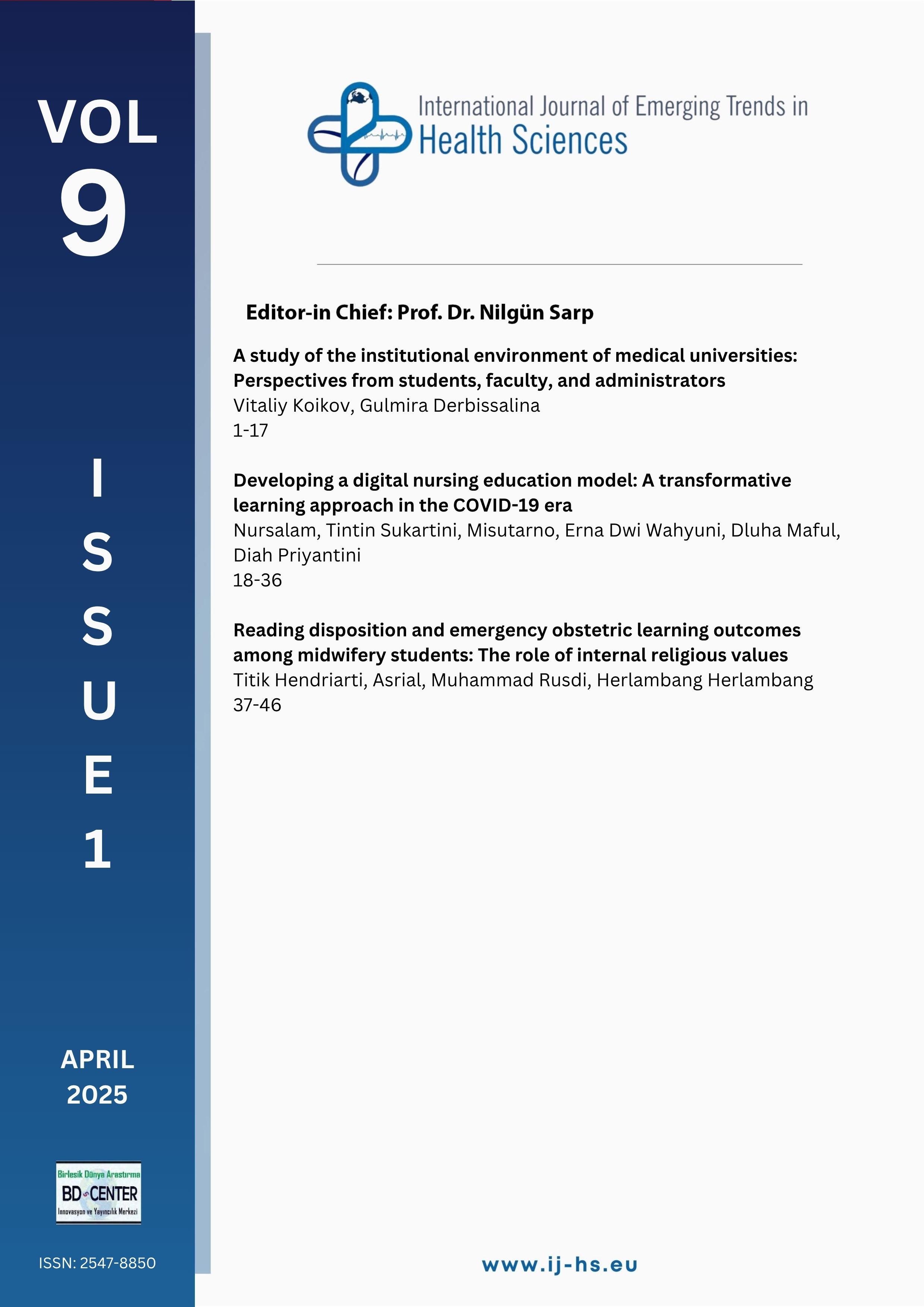Reading disposition and emergency obstetric learning outcomes among midwifery students: The role of internal religious values
Main Article Content
Abstract
This study examines the relationship between midwifery students' characteristics and their engagement with literature on obstetric emergencies, a critical area given the high stakes of maternal and neonatal health outcomes. While numerous educational resources are available, there is a significant gap in research exploring how students' reading behaviors and internal values influence their preparedness for managing such high-risk situations. A sequential explanatory mixed-methods design was employed to collect data from ninety-eight midwifery students in their fifth and seventh semesters, utilizing purposive sampling. Both questionnaires and interviews were conducted to gather quantitative trends and qualitative insights. Descriptive statistics were applied to the quantitative data, while thematic analysis following the Miles and Huberman framework was used for the qualitative data. The findings indicate that although students exhibit positive reading habits, they face cognitive and experiential challenges in responding to emergencies. Limited analytical thinking and insufficient hands-on experience hinder accurate diagnoses and timely interventions. The study highlights the importance of fostering intrinsic motivation and integrating ethical and religious values into the curriculum to enhance critical decision-making skills, which are essential for effective management of obstetric emergencies and the broader goals of healthcare education.
Keywords: Decision-making; education; midwifery; obstetric emergencies; preparedness
Downloads
Article Details

This work is licensed under a Creative Commons Attribution-NonCommercial-NoDerivatives 4.0 International License.
Authors who publish with this journal agree to the following terms:
- Authors retain copyright and grant the journal right of first publication with the work simultaneously licensed under a Creative Commons Attribution License that allows others to share the work with an acknowledgement of the work's authorship and initial publication in this journal.
- Authors are able to enter into separate, additional contractual arrangements for the non-exclusive distribution of the journal's published version of the work (e.g., post it to an institutional repository or publish it in a book), with an acknowledgement of its initial publication in this journal.
- Authors are permitted and encouraged to post their work online (e.g., in institutional repositories or on their website) prior to and during the submission process, as it can lead to productive exchanges, as well as earlier and greater citation of published work (See The Effect of Open Access).
